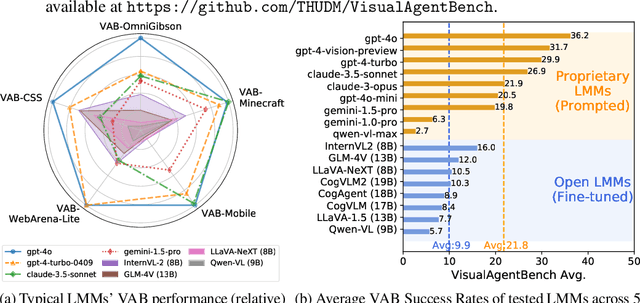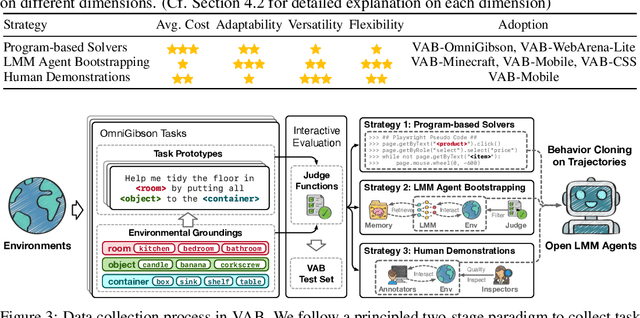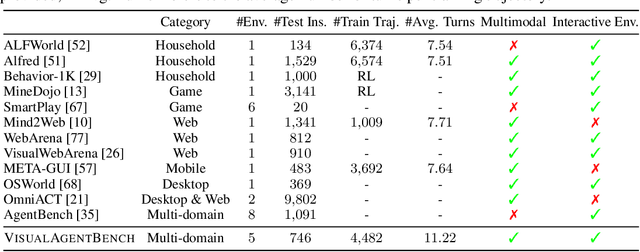Hanchen Zhang
3D$^2$-Actor: Learning Pose-Conditioned 3D-Aware Denoiser for Realistic Gaussian Avatar Modeling
Dec 16, 2024



Abstract:Advancements in neural implicit representations and differentiable rendering have markedly improved the ability to learn animatable 3D avatars from sparse multi-view RGB videos. However, current methods that map observation space to canonical space often face challenges in capturing pose-dependent details and generalizing to novel poses. While diffusion models have demonstrated remarkable zero-shot capabilities in 2D image generation, their potential for creating animatable 3D avatars from 2D inputs remains underexplored. In this work, we introduce 3D$^2$-Actor, a novel approach featuring a pose-conditioned 3D-aware human modeling pipeline that integrates iterative 2D denoising and 3D rectifying steps. The 2D denoiser, guided by pose cues, generates detailed multi-view images that provide the rich feature set necessary for high-fidelity 3D reconstruction and pose rendering. Complementing this, our Gaussian-based 3D rectifier renders images with enhanced 3D consistency through a two-stage projection strategy and a novel local coordinate representation. Additionally, we propose an innovative sampling strategy to ensure smooth temporal continuity across frames in video synthesis. Our method effectively addresses the limitations of traditional numerical solutions in handling ill-posed mappings, producing realistic and animatable 3D human avatars. Experimental results demonstrate that 3D$^2$-Actor excels in high-fidelity avatar modeling and robustly generalizes to novel poses. Code is available at: https://github.com/silence-tang/GaussianActor.
AutoGLM: Autonomous Foundation Agents for GUIs
Oct 28, 2024



Abstract:We present AutoGLM, a new series in the ChatGLM family, designed to serve as foundation agents for autonomous control of digital devices through Graphical User Interfaces (GUIs). While foundation models excel at acquiring human knowledge, they often struggle with decision-making in dynamic real-world environments, limiting their progress toward artificial general intelligence. This limitation underscores the importance of developing foundation agents capable of learning through autonomous environmental interactions by reinforcing existing models. Focusing on Web Browser and Phone as representative GUI scenarios, we have developed AutoGLM as a practical foundation agent system for real-world GUI interactions. Our approach integrates a comprehensive suite of techniques and infrastructures to create deployable agent systems suitable for user delivery. Through this development, we have derived two key insights: First, the design of an appropriate "intermediate interface" for GUI control is crucial, enabling the separation of planning and grounding behaviors, which require distinct optimization for flexibility and accuracy respectively. Second, we have developed a novel progressive training framework that enables self-evolving online curriculum reinforcement learning for AutoGLM. Our evaluations demonstrate AutoGLM's effectiveness across multiple domains. For web browsing, AutoGLM achieves a 55.2% success rate on VAB-WebArena-Lite (improving to 59.1% with a second attempt) and 96.2% on OpenTable evaluation tasks. In Android device control, AutoGLM attains a 36.2% success rate on AndroidLab (VAB-Mobile) and 89.7% on common tasks in popular Chinese APPs.
VisualAgentBench: Towards Large Multimodal Models as Visual Foundation Agents
Aug 12, 2024



Abstract:Large Multimodal Models (LMMs) have ushered in a new era in artificial intelligence, merging capabilities in both language and vision to form highly capable Visual Foundation Agents. These agents are postulated to excel across a myriad of tasks, potentially approaching general artificial intelligence. However, existing benchmarks fail to sufficiently challenge or showcase the full potential of LMMs in complex, real-world environments. To address this gap, we introduce VisualAgentBench (VAB), a comprehensive and pioneering benchmark specifically designed to train and evaluate LMMs as visual foundation agents across diverse scenarios, including Embodied, Graphical User Interface, and Visual Design, with tasks formulated to probe the depth of LMMs' understanding and interaction capabilities. Through rigorous testing across nine proprietary LMM APIs and eight open models, we demonstrate the considerable yet still developing agent capabilities of these models. Additionally, VAB constructs a trajectory training set constructed through hybrid methods including Program-based Solvers, LMM Agent Bootstrapping, and Human Demonstrations, promoting substantial performance improvements in LMMs through behavior cloning. Our work not only aims to benchmark existing models but also provides a solid foundation for future development into visual foundation agents. Code, train \& test data, and part of fine-tuned open LMMs are available at \url{https://github.com/THUDM/VisualAgentBench}.
AutoWebGLM: Bootstrap And Reinforce A Large Language Model-based Web Navigating Agent
Apr 04, 2024



Abstract:Large language models (LLMs) have fueled many intelligent agent tasks, such as web navigation -- but most existing agents perform far from satisfying in real-world webpages due to three factors: (1) the versatility of actions on webpages, (2) HTML text exceeding model processing capacity, and (3) the complexity of decision-making due to the open-domain nature of web. In light of the challenge, we develop AutoWebGLM, a GPT-4-outperforming automated web navigation agent built upon ChatGLM3-6B. Inspired by human browsing patterns, we design an HTML simplification algorithm to represent webpages, preserving vital information succinctly. We employ a hybrid human-AI method to build web browsing data for curriculum training. Then, we bootstrap the model by reinforcement learning and rejection sampling to further facilitate webpage comprehension, browser operations, and efficient task decomposition by itself. For testing, we establish a bilingual benchmark -- AutoWebBench -- for real-world web browsing tasks. We evaluate AutoWebGLM across diverse web navigation benchmarks, revealing its improvements but also underlying challenges to tackle real environments. Related code, model, and data will be released at \url{https://github.com/THUDM/AutoWebGLM}.
AgentBench: Evaluating LLMs as Agents
Aug 07, 2023



Abstract:Large Language Models (LLMs) are becoming increasingly smart and autonomous, targeting real-world pragmatic missions beyond traditional NLP tasks. As a result, there has been an urgent need to evaluate LLMs as agents on challenging tasks in interactive environments. We present AgentBench, a multi-dimensional evolving benchmark that currently consists of 8 distinct environments to assess LLM-as-Agent's reasoning and decision-making abilities in a multi-turn open-ended generation setting. Our extensive test over 25 LLMs (including APIs and open-sourced models) shows that, while top commercial LLMs present a strong ability of acting as agents in complex environments, there is a significant disparity in performance between them and open-sourced competitors. It also serves as a component of an ongoing project with wider coverage and deeper consideration towards systematic LLM evaluation. Datasets, environments, and an integrated evaluation package for AgentBench are released at https://github.com/THUDM/AgentBench
 Add to Chrome
Add to Chrome Add to Firefox
Add to Firefox Add to Edge
Add to Edge